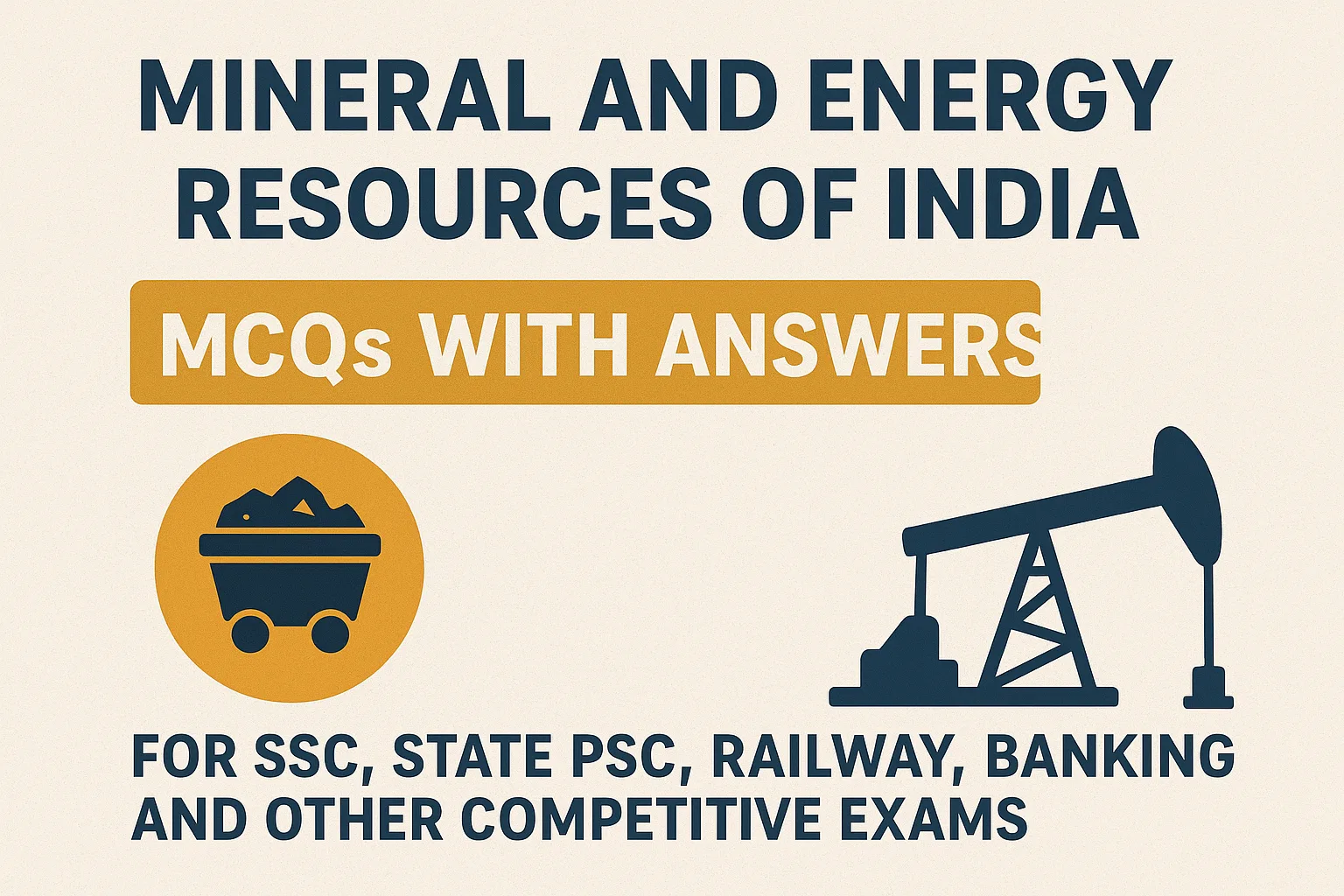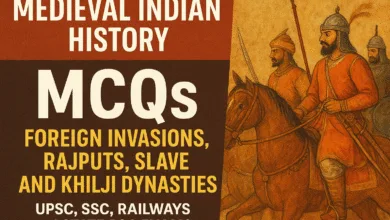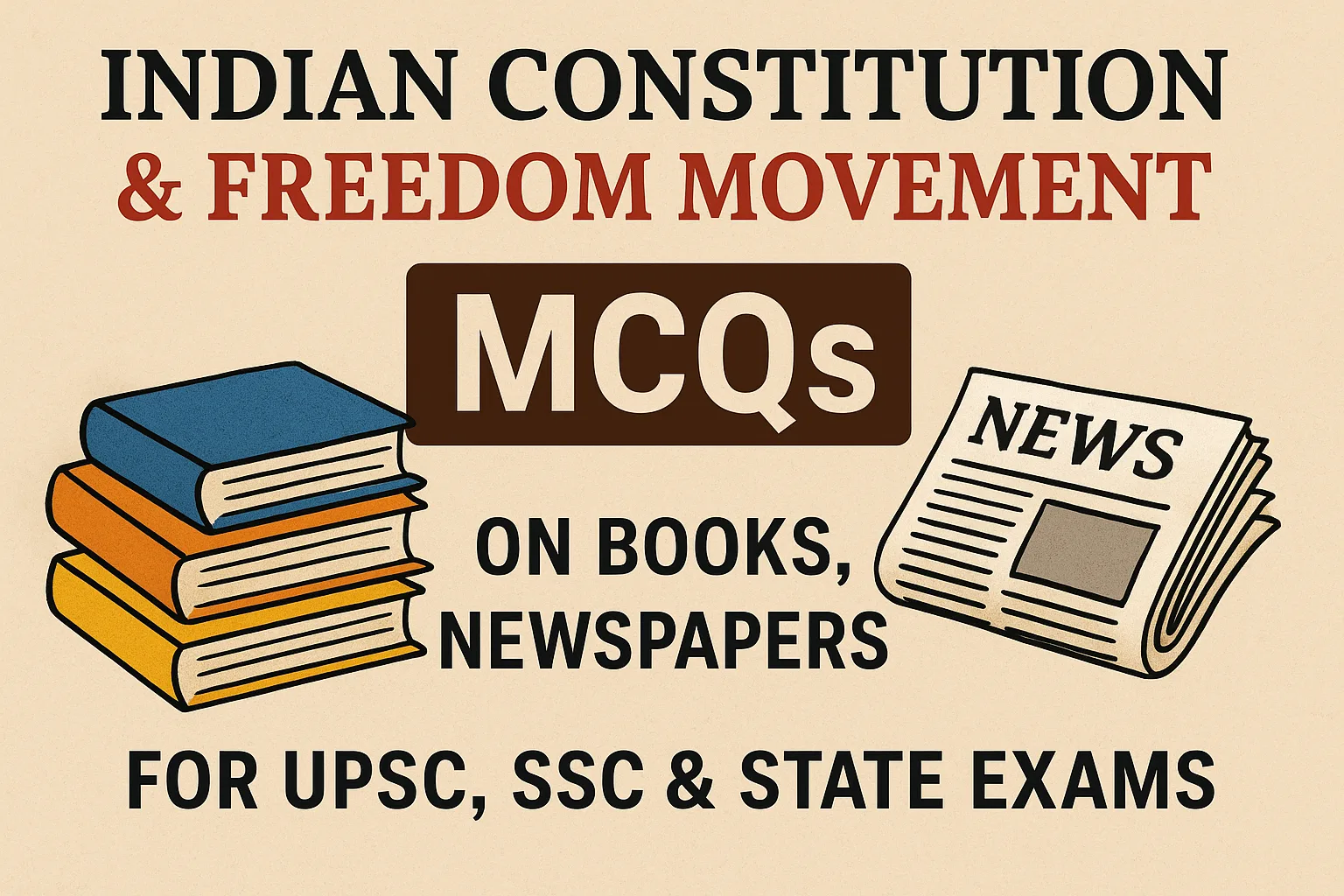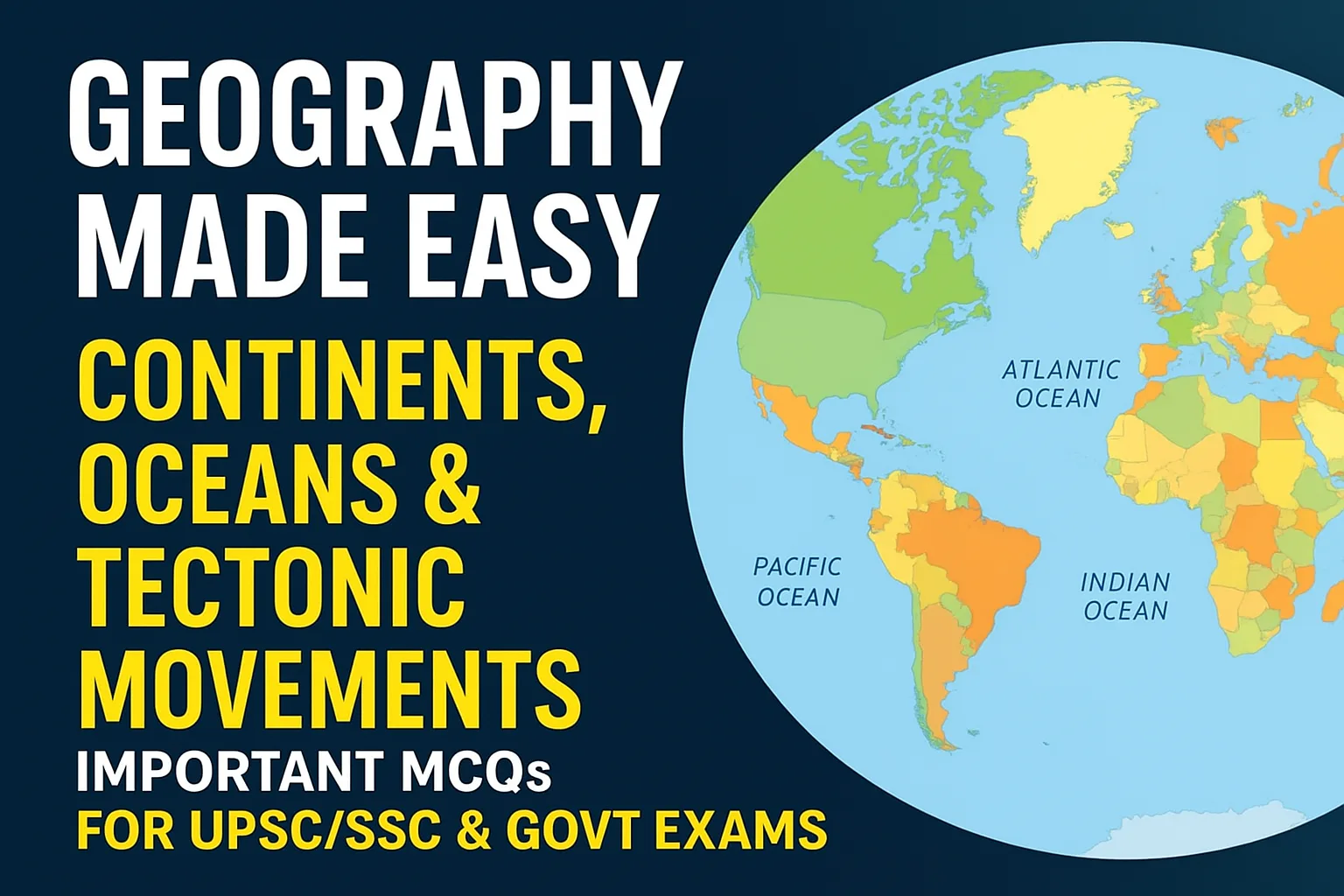IMF, World Bank, WTO MCQ Questions For JKSSB/ JKPSC And Delhi police Exams
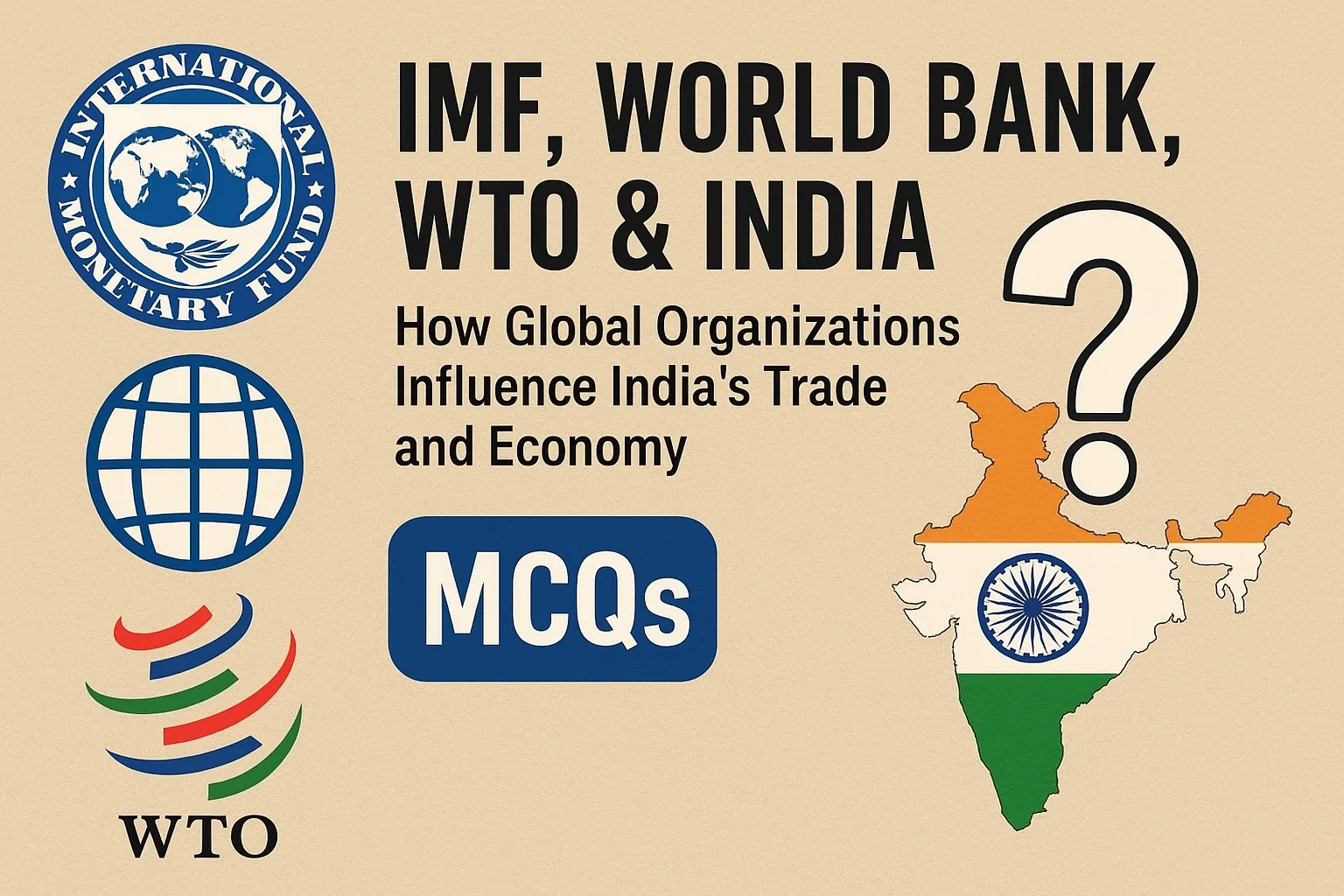
The world economy and India’s economy are affected by many financial organizations, trade rules, and policies. Groups like the IMF, World Bank, WTO, ADB, and AIIB help keep money systems stable, encourage trade, and support development projects in different countries. In India, rules about Balance of Payments (BoP), Foreign Direct Investment (FDI), Foreign Portfolio Investment (FPI), currency exchange systems, FEMA, Special Economic Zones (SEZs), and National Investment and Manufacturing Zones (NIMZs) are very important to handle money coming in and going out of the country. Knowing about these things is helpful not just for students of economics and commerce but also for people preparing for exams like UPSC, SSC, Banking, Railways, and State Public Service Commissions.
Which institutions make up the World Bank Group?
a) IMF, WTO, and ILO
b) IBRD, IDA, IFC, MIGA, ICSID
c) ILO, UNESCO, UNDP
d) ADB, AIIB, and NDB
Answer: b) IBRD, IDA, IFC, MIGA, ICSID
The Foreign Portfolio Investors (FPIs) are more volatile than FDI because:
a) FPIs represent long-term investments in infrastructure.
b) FPIs can be quickly withdrawn from stock markets, causing sudden capital flight.
c) FPIs are controlled by government regulations.
d) FPIs do not involve any financial risk.
Answer: b) FPIs can be quickly withdrawn from stock markets, causing sudden capital flight.
The current account in the Balance of Payments excludes which of the following?
a) Goods exports and imports.
b) Service exports like IT and tourism.
c) Remittances by Indians abroad.
d) FDI inflows from foreign companies.
Answer: d) FDI inflows from foreign companies.
Which of the following does not represent a role performed by the World Trade Organization (WTO)?
a) Administering trade agreements.
b) Acting as a forum for trade negotiations.
c) Providing balance of payments loans.
d) Settling trade disputes.
Answer: c) Providing balance of payments loans.
The 1991 LPG (Liberalization, Privatization, and Globalization) reforms were introduced with the objective to:
a) Strengthen India’s agricultural base.
b) Deal with the Balance of Payments crisis and open the economy.
c) Reduce India’s gold exports.
d) Increase domestic taxation levels.
Answer: b) Deal with the Balance of Payments crisis and open the economy.
The Current Account in the Balance of Payments records transactions related to goods, services, income, and current transfers between?
a) Foreign Direct Investment and Portfolio Investment.
b) Loans, external borrowings, and remittances.
c) Exports and imports of goods, services, and unilateral transfers.
d) Foreign aid, SDRs, and reserve assets.
Answer: c) Exports and imports of goods, services, and unilateral transfers.
When India receives remittances from its workers abroad, it is recorded under:
a) Current Account credit side.
b) Current Account debit side.
c) Capital Account credit side.
d) Capital Account debit side.
Answer: a) Current Account credit side.
The Capital Account of BoP deals with:
a) Export and import of goods only.
b) Transfer of capital assets such as loans, investments, and borrowings.
c) Day-to-day receipts and payments.
d) Services trade like tourism and IT exports.
Answer: b) Transfer of capital assets such as loans, investments, and borrowings.
When an Indian company secures a loan from a foreign bank, how is this transaction reflected in the Balance of Payments?
a) Current Account credit.
b) Current Account debit.
c) Capital Account inflow.
d) Capital Account outflow.
Answer: c) Capital Account inflow.
What distinguishes Foreign Direct Investment (FDI) from Foreign Portfolio Investment (FPI)?
a) FDI involves controlling ownership, while FPI involves passive investment in shares and bonds.
b) FDI is short-term, while FPI is long-term.
c) FDI deals only with debt instruments, while FPI deals with equity.
d) FDI and FPI are equal.
Answer: a) FDI involves controlling ownership, while FPI involves passive investment in shares and bonds.
A trade surplus in the Current Account indicates that:
a) Imports are higher than exports.
b) Exports are higher than imports.
c) Capital inflows are greater than capital outflows.
d) Foreign exchange reserves are falling.
Answer: b) Exports are higher than imports.
The Foreign Exchange Management Act (FEMA), 1999 replaced which earlier Act in India?
a) SEBI Act
b) RBI Act
c) Foreign Exchange Regulation Act (FERA)
d) Companies Act
Answer: c) Foreign Exchange Regulation Act (FERA)
A persistent Current Account Deficit (CAD) can be problematic for a country because:
a) It reduces tax revenue.
b) It increases reliance on foreign capital inflows and external debt.
c) It decreases the domestic money supply.
d) It increases the gold reserves of the country.
Answer: b) It increases reliance on foreign capital inflows and external debt.
Which of the following correctly differentiates between FEMA and FERA?
a) FEMA is restrictive, while FERA is liberal.
b) FEMA is liberal and facilitates trade, while FERA was restrictive and regulatory.
c) Both FEMA and FERA are equally restrictive.
Answer: b) FEMA is liberal and facilitates trade, while FERA was restrictive and regulatory.
The tariff barriers used in international trade mainly include:
a) Customs duties and import taxes.
b) Import quotas and licensing.
c) Technical standards and product certification.
d) Political sanctions.
Answer: a) Customs duties and import taxes.
The Capital Account Convertibility of the rupee would mean:
a) Indians can freely exchange currency for tourism purposes only.
b) Full freedom to convert local currency into foreign currency for all capital transactions like investment and loans.
c) Restriction on all types of foreign investments.
d) The government fixes the exchange rate at a constant level.
Answer: b) Full freedom to convert local currency into foreign currency for all capital transactions like investment and loans.
The Foreign Exchange Reserves of India mainly consist of:
a) Gold, foreign currency assets, and SDRs.
b) Only US dollars held by RBI.
c) Only foreign government bonds.
d) Domestic savings held by commercial banks.
Answer: a) Gold, foreign currency assets, and SDRs.
Which of the following correctly describes the International Monetary Fund (IMF)?
a) It provides long-term project loans to developing countries.
b) It monitors global financial stability and provides short-term balance of payment support.
c) It works exclusively to promote world trade and tariff reduction.
d) It primarily provides development aid for poverty eradication.
Answer: b) It monitors global financial stability and provides short-term balance of payment support.
The objective of India’s Foreign Trade Policy (FTP) 2015–20 was to:
a) Ban imports to protect the domestic industry.
b) Double India’s exports and integrate India with global supply chains.
c) Replace WTO regulations.
d) Restrict FDI in India.
Answer: b) Double India’s exports and integrate India with global supply chains.
What were the main factors that led to the Balance of Payments (BoP) crisis in India in 1991?
a) A sudden increase in agricultural exports.
b) Gulf War leading to oil price rise and high import bills.
c) A rise in India’s gold reserves.
d) Massive inflow of FDI in India.
Answer: b) Gulf War leading to oil price rise and high import bills.
The primary objective of India’s SEZ policy (2005) was:
a) To promote only agricultural exports.
b) To create globally competitive manufacturing hubs and boost exports.
c) To regulate Indian companies’ foreign borrowings.
d) To control inflation in the domestic economy.
Answer: b) To create globally competitive manufacturing hubs and boost exports.
The International Finance Corporation (IFC) focuses mainly on:
a) Financing private sector projects in developing countries.
b) Regulating the central banks of member nations.
c) Settling international disputes between governments.
d) Controlling exchange rates between developing countries.
Answer: a) Financing private sector projects in developing countries.
Non-tariff barriers in international trade include:
a) Excise duties.
b) Import quotas, licensing, and anti-dumping measures.
c) Customs duties on imports.
d) Direct subsidies on exports.
Answer: b) Import quotas, licensing, and anti-dumping measures.
One of the following is NOT a part of the World Bank Group?
a) IBRD
b) IMF
c) IFC
d) IDA
Answer: b) IMF
The WTO dispute settlement mechanism is important because:
a) It provides military protection to countries in conflict.
b) It ensures fair resolution of trade disputes between member countries.
c) It regulates the exchange rates of member nations.
d) It finances infrastructure projects in poor countries.
Answer: b) It ensures fair resolution of trade disputes between member countries.

